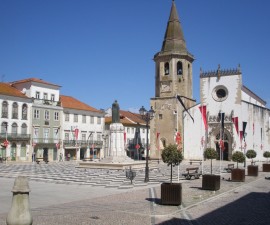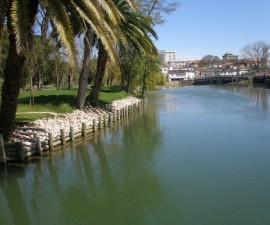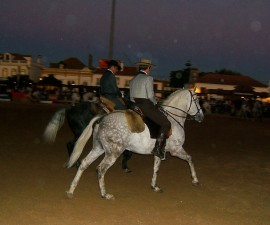Tomar, Portugal is one of the country’s most historic cities. Its Templar Castle and Convento de Cristo became the national headquarters of the Templar Knights in the middle ages, and later was at the forefront of the Order of Christ. The city was home to Henry the Navigator and provided the stimulus and resources for his New World Explorations of the 15th Century.
The Convento de Cristo forms the centrepiece of historic Tomar. Construction of this unique monastic fortress was begun by Gualdim Pais, provincial Master of the Templar Knights, and was constructed over the course of five centuries. It was designated a UNESCO World Heritage Site in 1983 for its architectural and historic significance. The Convento de Cristo is located within the walls of the Templar Castle, which consists of an outer defensive wall and a citadel with a keep inside, and boasts many architectural points of interest. The complex is a must-see destination for any visitor to Tomar, Portugal, providing a fascinating insight into the Templar Knights and Portugal’s Age of Exploration.
Perched on a hill, a short walk beyond the Templar Castle is the Chapel of Nossa Senhora da Conceição, a lovely example of Portuguese Renaissance-inspired architecture. It was constructed in the 16th Century and was originally intended as a funerary chapel for King João III, though he was eventually buried in Lisbon for political reasons.
At the foot of the hill below the castle lies the main centre of Tomar. The city boasts many old buildings, well preserved since their construction in the 17th and 18th Centuries. Some are significantly older such as the Igreja de São João, or Church of St John the Baptist, which is located in the attractive Praça da República. This recently restored Church dates back to the early 16th Century and is a fine example of Manueline architecture.
There is plenty to do in Tomar away from its historic monuments. The city has many tasty eateries, good shopping and a lovely central park in which to take a relaxing stroll on a sunny afternoon.
The surrounding countryside offers much to be discovered. A few kilometres away is the Castelo de Bode, a freshwater lake that was created in 1951 following the construction of a major dam upstream. The lake is a summer playground for visitors to Tomar who flock there to bathe in its clear waters and take part in all manner of water sports. There are also plenty of hiking and mountain biking trails and horse riding opportunities in the area to satisfy the most energetic of visitors. It is this contrasting mix of history and nature, of the urban and the rural that make Tomar, Portugal such a compelling city and one that deserves to be on the itinerary of any visitor to the country.

















